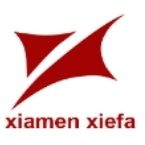
Corn starch is a versatile ingredient that has been used in various industries, from food to paper manufacturing. It is a carbohydrate extracted from the endosperm of corn kernels and is a common thickening agent in cooking and baking. However, its uses go beyond the culinary world, and corn starch has become a popular material in packaging due to its biodegradable and renewable properties. In this essay, we will discuss what corn starch is, its uses, and the benefits of using it as a packaging material.
What is Corn Starch?
Corn starch, also known as corn flour, is a fine white powder extracted from the endosperm of corn kernels. The process involves steeping the corn kernels in water and separating the starch from the other components, such as protein, fiber, and oil. The resulting product is a tasteless and odorless powder that is commonly used as a thickening agent in cooking and baking.
In addition to its culinary uses, corn starch is also used in various industries. For example, it is used in the production of paper, textiles, and adhesives. It is also a common ingredient in pharmaceuticals and personal care products.
What is Corn Starch Used for?
As mentioned earlier, corn starch is commonly used as a thickening agent in cooking and baking. It can be used to thicken soups, sauces, and gravies, as well as to create a smooth texture in desserts such as puddings and custards. Corn starch is also a popular ingredient in gluten-free baking as it provides a light texture and helps bind ingredients together.
Aside from its culinary uses, corn starch is also used in the production of paper. It is added to paper pulp to increase the paper’s strength and thickness. Corn starch is also used as an adhesive in paper production to help bind the fibers together.
Corn starch is also used in the textile industry as a sizing agent. Sizing is a process in which a substance is applied to fibers to improve their handling properties, such as stiffness and smoothness. Corn starch is also used as a finishing agent to provide a soft feel to fabrics.
In the pharmaceutical industry, corn starch is used as a binder in tablets and capsules. It is also used as a disintegrant, which helps break down the tablet or capsule once ingested, allowing the medication to be absorbed into the body more quickly.
In the personal care industry, corn starch is used as an absorbent in products such as baby powder and body powders. It is also used in skincare products to provide a smooth and silky texture.
What are the Benefits of Using Corn Starch as a Packaging Material?
One of the most significant benefits of using corn starch as a packaging material is its biodegradability. Corn starch packaging is made from renewable resources and is compostable, meaning it can break down naturally in the environment. Unlike traditional plastic packaging, which can take hundreds of years to decompose, corn starch packaging can break down in a matter of months, leaving behind no harmful residues.
Corn starch packaging also has a lower carbon footprint than traditional plastic packaging. The production of corn starch packaging requires less energy and generates fewer greenhouse gas emissions than the production of plastic packaging.
Another benefit of corn starch packaging is its versatility. It can be molded into various shapes and sizes, making it suitable for a wide range of products. Corn starch packaging can also be printed on, allowing companies to customize their packaging with branding and logos.
Corn starch packaging is also lightweight, which can reduce shipping costs and carbon emissions associated with transportation. Additionally, corn starch packaging is moisture-resistant, which helps protect the product inside from damage.
Conclusion
In conclusion, corn starch is a versatile ingredient that has a wide range of uses, from culinary to industrial applications. Its unique properties, such as its ability to thicken and bind ingredients, make it a valuable ingredient in the food industry. Its renewable and biodegradable properties also make it a popular choice as a packaging material, offering an eco-friendly alternative to traditional plastic packaging.
